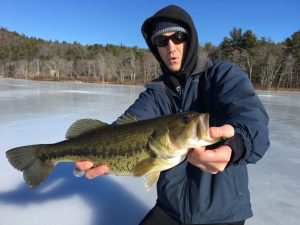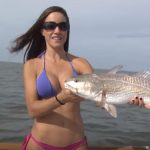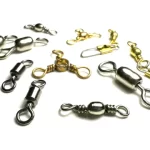Locating productive ice fishing spots on a new lake can be a rewarding yet challenging endeavor. Whether targeting panfish, pickerel, or bass, using a few key techniques can significantly improve success. When venturing onto unfamiliar waters, preparation, observation, and adaptability are essential.
Steps for Finding Ice Fishing Spots
- Use GPS or lake charts to locate gradual drop-offs.
- Drill exploratory holes in the ice.
- Hang an ice transducer in the water, if available.
- Set up tip-ups or start jigging.
- Move frequently if fish aren’t biting.

Exploring a lake for the first time may seem daunting, especially when little is known about the area. Basic research beforehand can provide crucial details, such as the types of fish present, access points, and lake depths. Utilizing a handheld GPS device with lake maps helps plot and save locations where fish activity is observed. This tool becomes invaluable when moving between spots and marking productive areas for future trips.
Locating Key Areas with GPS and Drilling Techniques
Start by identifying flats and gradual slopes, as these often hold active fish. Using lake contour maps, focus on areas where the slope transitions from shallow flats to deeper water. Drill multiple holes in a grid pattern and check depths with a fish finder to confirm promising spots. Key areas usually include depths between 4 and 10 feet, particularly where vegetation or other structure is present.
Once a productive area is identified, set up tip-ups at varying depths. Position some at the edge of drop-offs and others in shallower water. This approach increases the chances of encountering fish moving between feeding and resting zones.
Jigging for Fast Action
In addition to tip-ups, jigging can provide exciting, fast-paced action. Light-action rods paired with small jigs tipped with soft plastics or live bait work well for species like bluegill and perch. Once a school of fish is located, consistent jigging can yield a steady catch.
Light tackle offers the advantage of increased sensitivity, making it easier to detect subtle strikes. For example, using a light jig and 4-pound test line can lead to memorable catches, such as a sizable pickerel or largemouth bass.
Tip-Up Success and Adjustments
Tip-ups are highly effective for larger species, including pickerel and bass. Begin by setting tip-ups at different depths and observe where the most activity occurs. If shallow water produces more strikes, adjust deeper tip-ups accordingly. On many days, fish activity is higher in the shallows, especially near vegetation.
One notable tactic is to use large shiners or other live bait on tip-ups to attract larger predators. Regularly check bait and reposition tip-ups if necessary. This approach not only increases catch rates but also provides a better understanding of fish movement patterns throughout the day.
Midday Challenges and Afternoon Action
As midday approaches, fish activity may slow. During these lulls, it’s beneficial to switch techniques. If fish are nosing bait but not striking, try using small spoons or lures to trigger more aggressive responses. Jigging with spoons can entice pickerel and perch to strike when other methods prove less effective.
Later in the afternoon, as light levels decrease, fish often become more active again. Be prepared for a flurry of action close to sunset, as many species feed more aggressively during this time. Keep a close eye on tip-ups and be ready to respond quickly when a flag goes up.
Finding productive ice fishing spots on an unfamiliar lake requires patience, persistence, and the right tools. By using GPS, drilling strategically, and employing multiple techniques like tip-ups and jigging, anglers can significantly improve their chances of success. Exploring new waters not only enhances fishing skills but also creates lasting memories of adventure and discovery. With careful preparation and a willingness to adapt, every ice-fishing trip can become a rewarding experience.
Image/Source: OnTheWater





